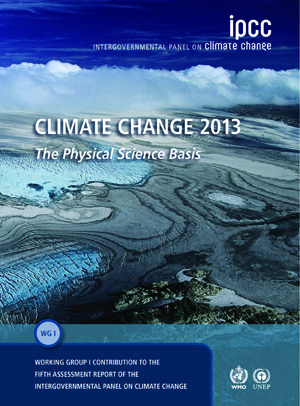 The Fifth Assessment Report – AR5 for short – kicked off this morning in Stockholm. The Intergovernmental Panel on Climate Change, co-winner of the Nobel Peace Prize in 2007, held a press conference to announce the findings of the first working group (WG1) on “The Physical Science Basis.” (The rest of the AR5 will roll out in three more reports culminating in the Synthesis Report in October of next year.)
The Fifth Assessment Report – AR5 for short – kicked off this morning in Stockholm. The Intergovernmental Panel on Climate Change, co-winner of the Nobel Peace Prize in 2007, held a press conference to announce the findings of the first working group (WG1) on “The Physical Science Basis.” (The rest of the AR5 will roll out in three more reports culminating in the Synthesis Report in October of next year.)
The lead in the press release today is “Human influence on the climate system is clear.” That’s for those who have been living in another solar system for the past ten years. For the rest of us, the report underlines a lot of what we already have learned. It is a herculean task for the 259 authors Continue reading







